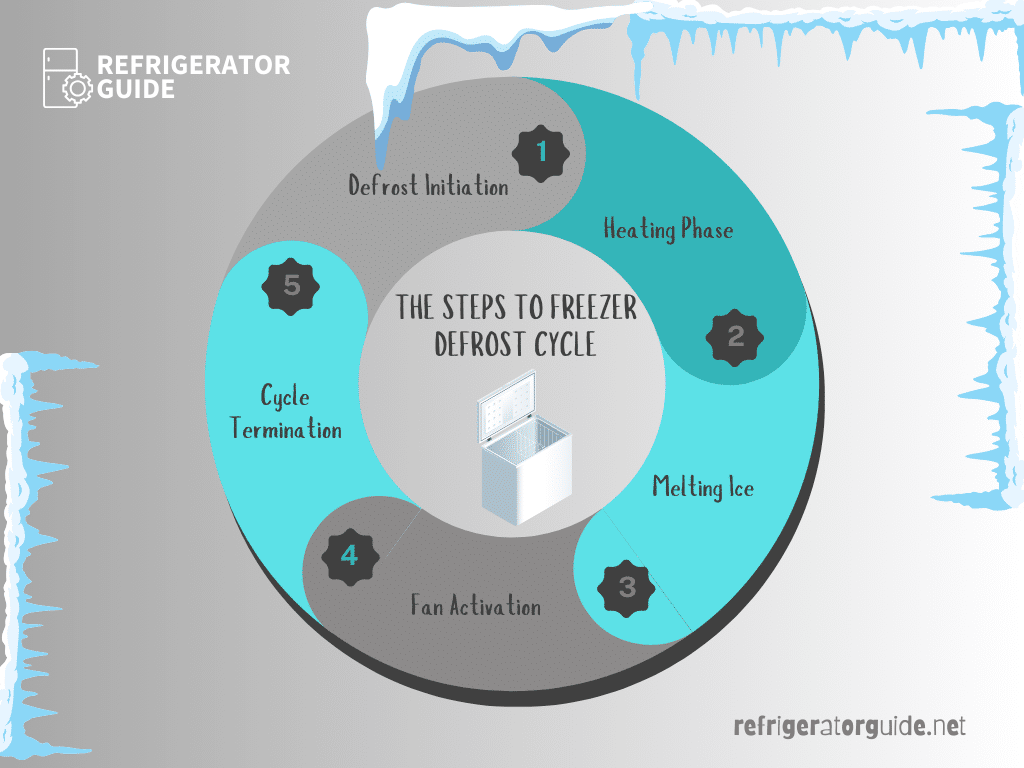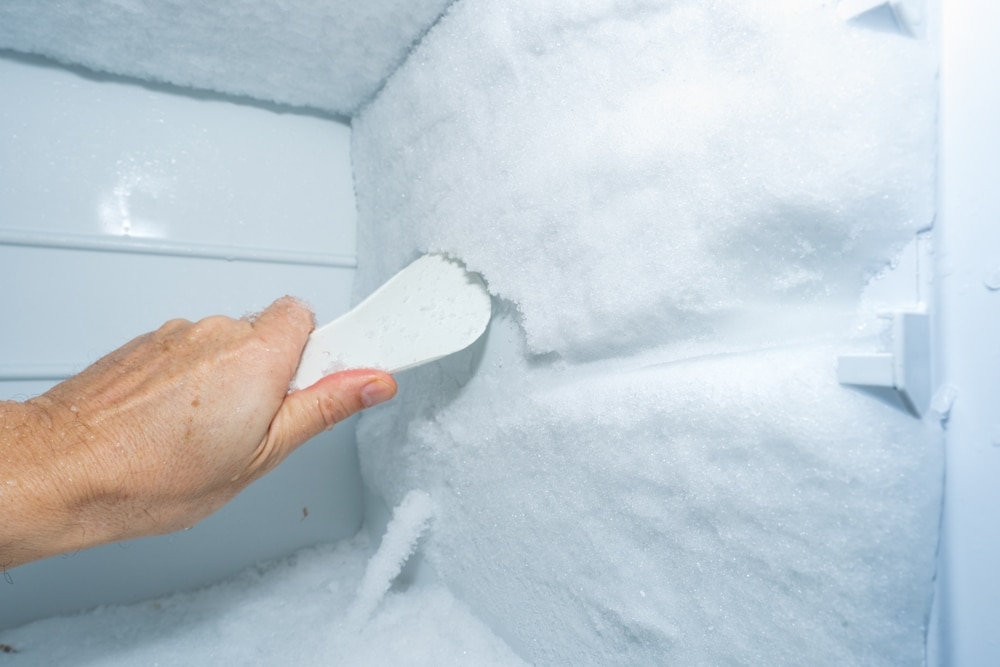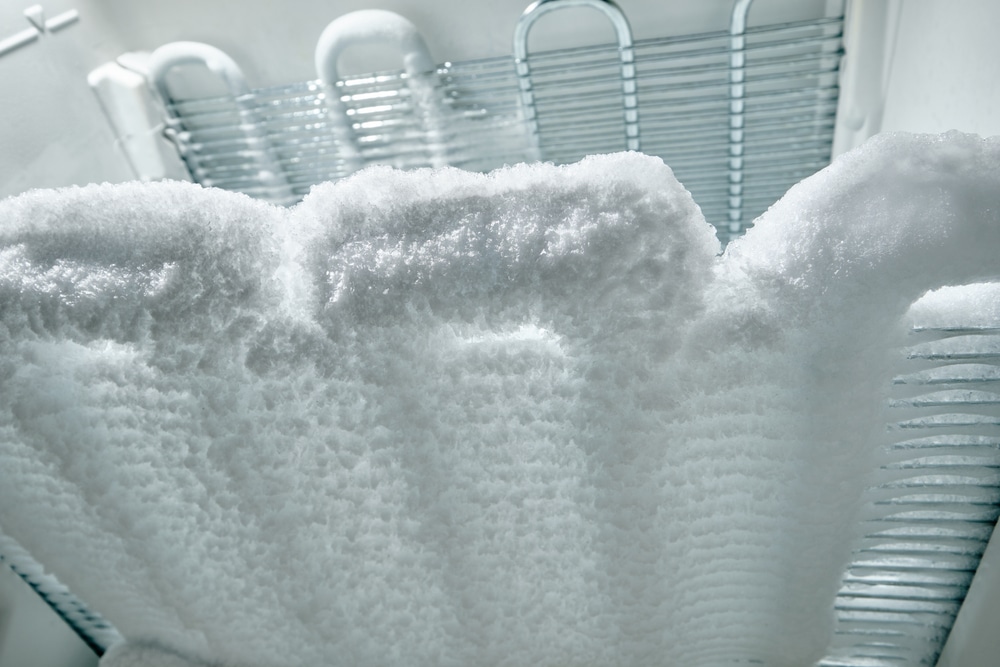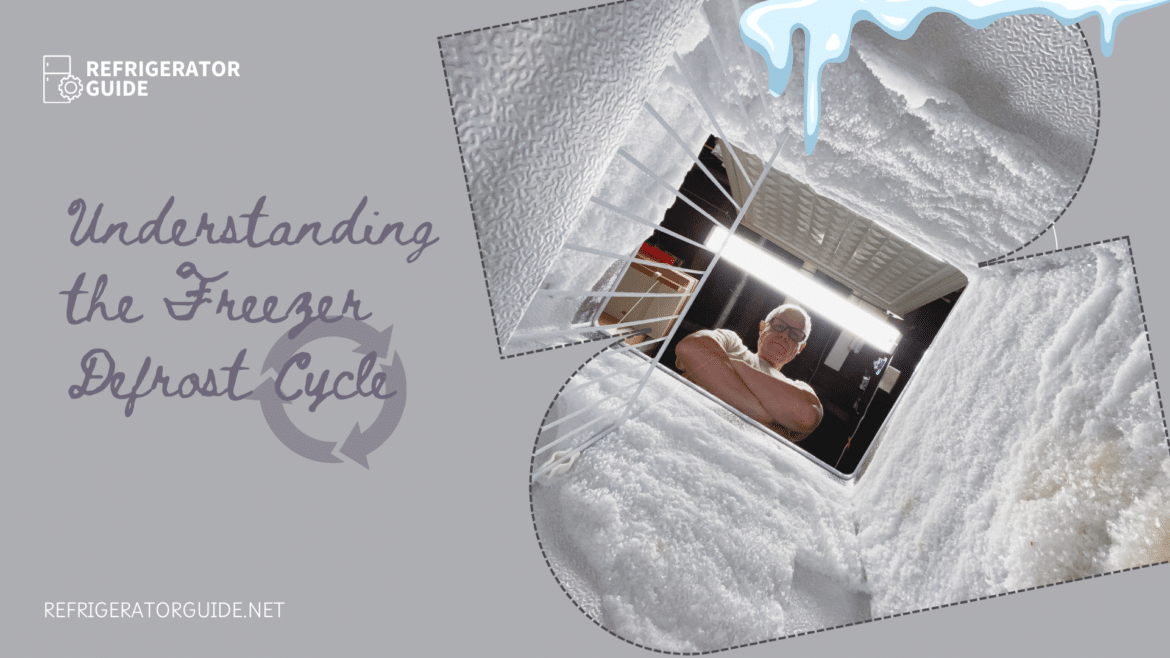Table of Contents
Fed up with your deep freezer constantly frosting up, again and again? You know the only solution to this could be defrosting it. But before you do so, you must understand this freezer defrost cycle once and for all! The lifespan of the freezer is increased and effective cooling is maintained by preventing ice buildup on the evaporator coils through a freezer defrost cycle. The freezer stops cooling during this cycle to allow any ice to melt, maintaining constant temperatures and unobstructed airflow. We will learn ahead that this procedure guarantees the appliance operates effectively, lessens the strain on parts, and prolongs the shelf life of food. Let us now take a wider and closer look at this cycle.
What is a Freezer Defrost Cycle?
Folks, it is never a good sign when your refrigerator keeps freezing ice inside. Several problems arise because of this. Most importantly, your freezer is unable to preserve or even cool up your food and drinks. An automatic procedure that we’ve discussed above called a freezer defrost cycle clears ice accumulation from the evaporator coils, preserving ideal circulation and guaranteeing effective cooling. Ice can block the coils if they aren’t regularly defrosted, which lowers performance and increases energy usage. A defrost thermostat, defrost heater, defrost timer, and solenoid valve are among the essential parts that govern the cycle, temperature, and refrigerant flow. The cycle uses electric heat.
Key Elements of the Defrost Cycle
- Defrost Thermostat: Controls the temperature during defrosting to avoid overheating.
- Defrost Heater: Provides electric heat to melt ice from the evaporator coils.
- Defrost Timer: Manages the timing and frequency of the cycle.
- Solenoid Valve: Prevents refrigerant from flowing to certain areas during defrost.

Working of a Freezer Defrost Cycle?
In most refrigerators and freezers, the defrost cycle initiates based on a timer or sensor. The defrost heater warms up the evaporator coils to melt the ice. Once the ice is melted, the freezer returns to its cooling mode.
The defrost cycle generally includes;
- Activation of the defrost heater to melt ice.
- Monitoring by the defrost thermostat to ensure proper temperature regulation.
- Evaporation of water from melted ice through the freezer fan, preventing water buildup.
How Long Does a Freezer Defrost Cycle Last?
The defrost cycle duration can vary depending on the freezer model and settings. In general;
- Standard Freezers: A defrost cycle can last 15-30 minutes.
- Commercial Freezers: These may have longer cycles, given larger compartments and higher usage demands.
Factors Influencing Defrost Cycle Length
- Freezer compartment size
- Defrost heater power
- Coil temperature and efficiency

Types of Defrost Systems
Here is a look at the necessary defrost systems for your freezer.
Cycle Defrost Freezer
Cycle defrost freezers typically require manual defrosting, which means turning off the appliance to let the ice melt. These systems are more energy-efficient but require periodic defrosting by the user.
Automatic Defrosting (Frost-Free)
Most modern freezers use an automatic defrosting system, often referred to as “frost-free.” These systems cycle defrost automatically without user intervention.
Tips for Optimizing Freezer Defrost Cycles
Here are some tips that would help you optimize your freezer defrost cycles well.
- Set an appropriate coil temperature to ensure efficient defrosting without overheating.
- Check the defrost timer periodically to make sure it’s functioning correctly.
- Monitor refrigerant flow to prevent ice buildup or freezer frosting up.
- Ensure proper airflow in the ge freezer compartment, which helps prevent frost.
- Use a high-quality defrost thermostat to maintain accurate temperature during the cycle.

Final Thoughts
Summing up, the freezer defrost cycle is essential to ensuring that freezers and common refrigerators continue to operate effectively and without frost. You may help avoid problems like long cycle times or high temperatures that impair performance by being aware of how the heater, thermostat, and defrost timer dissolve ice accumulation. Effective operation is supported by routine inspections of the evaporator coils, coil temperature, and defrost cycle settings.
In conclusion, whether automatic or hot gas defrost in commercial freezers, optimizing defrost cycles helps maintain the freezer compartment and guarantees a steady flow of refrigerant for dependable, long-lasting natural refrigeration.
LEARN THE CYCLE TO GET RID OF THE FROST!

